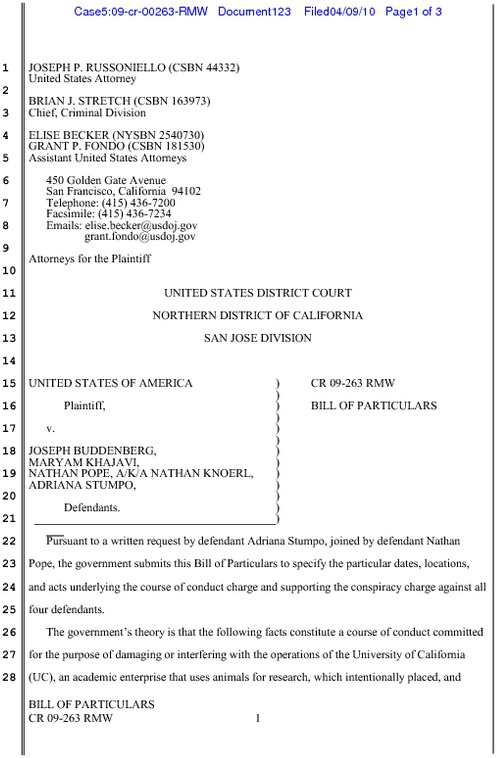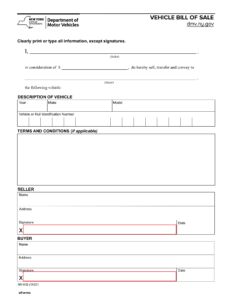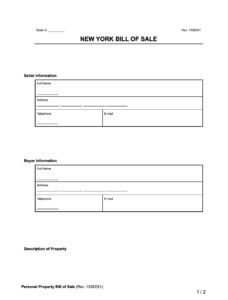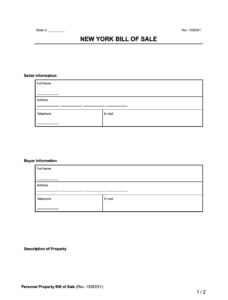Navigating the complexities of litigation in New York can be a challenging endeavor, especially when you’re faced with specific legal requests. One such common but crucial document you might encounter is a Bill of Particulars. Essentially, it’s a formal request from one party in a lawsuit to another, asking for more detailed information about the claims being made. Think of it as a way to clarify and narrow down the issues in dispute, ensuring both sides understand precisely what they need to prepare for at trial.
For anyone involved in a lawsuit within the Empire State, understanding and properly responding to or requesting this document is paramount. It’s not just a formality; it plays a vital role in preventing surprises, facilitating settlement discussions, and streamlining the trial process. While the idea of drafting one might seem daunting, having a clear understanding of its purpose and structure, perhaps even with the help of a suitable Bill of Particulars template New York, can significantly ease the burden and improve the effectiveness of your legal strategy.
Understanding the Role of a Bill of Particulars in New York Litigation
In New York’s civil litigation landscape, the Bill of Particulars serves as a critical tool for refining and clarifying the pleadings. Its primary purpose is to amplify a pleading, providing a more detailed statement of a party’s claims or defenses. This clarity is essential for several reasons: it allows the opposing party to adequately prepare their case, limits the scope of proof at trial, and helps prevent unexpected testimony or evidence from being introduced. Without this specificity, litigation could become an endless fishing expedition, making it incredibly difficult to defend or prosecute a claim effectively.

This document is frequently requested by defendants, particularly in personal injury cases, but it can be sought in various other civil actions, including contract disputes, professional malpractice, and more. For instance, in a personal injury claim, the defendant might ask for specific details regarding the date and time of the incident, the exact injuries sustained, the medical treatment received, and a breakdown of damages claimed, such as lost wages or medical expenses. It ensures that the defendant isn’t left guessing about the precise nature and extent of the plaintiff’s allegations.
The legal framework for Bills of Particulars in New York is primarily governed by the Civil Practice Law and Rules (CPLR), specifically sections 3041 and 3042. CPLR 3041 defines what a Bill of Particulars is, while CPLR 3042 outlines the procedure for demanding and serving one. These rules emphasize the importance of providing specific, not general, information. The court’s aim is to ensure a fair and efficient judicial process, and the Bill of Particulars is a key instrument in achieving that goal by promoting transparency and minimizing ambiguity.
Ultimately, a well-crafted Bill of Particulars demonstrates diligence and a clear understanding of the case at hand. It forces the requesting party to articulate their claims with precision, and the responding party to disclose the specifics of their case. This exchange of detailed information is fundamental to the discovery process, paving the way for informed negotiations, potential settlements, and if necessary, a more focused and streamlined trial. Its impact on the efficiency and fairness of New York’s legal proceedings cannot be overstated.
Key Elements to Include in a Bill of Particulars
- **Date and Time of Occurrence:** Exact details of when the incident or events in question took place.
- **Location of Occurrence:** Precise street address, intersection, or specific area where the incident happened.
- **Description of Incident:** A concise yet thorough account of how the incident occurred, including specific acts or omissions.
- **Nature and Extent of Injuries:** Detailed description of all physical and psychological injuries sustained.
- **Medical Treatment:** Information on all medical providers, dates of treatment, and types of care received.
- **Lost Earnings:** Specifics of employment, dates of lost work, and total amount of wages or income lost.
- **Special Damages:** Any other quantifiable damages such as property damage, out-of-pocket expenses, or future medical costs.
- **Specific Acts of Negligence/Breach:** A detailed list of the specific negligent acts or contractual breaches attributed to the other party.
Crafting Your Bill of Particulars: Tips and Considerations
When it comes to preparing this crucial document, the temptation to simply find a generic Bill of Particulars template New York online and fill in the blanks can be strong. While templates can certainly provide a useful starting point, acting as a structural guide, it’s vital to remember that each legal case is unique. No two lawsuits are exactly alike, and therefore, no single template can perfectly capture the nuances and specific requirements of your particular situation. Relying solely on a generic form without careful customization could lead to insufficient disclosure or, conversely, over-disclosure of unnecessary information.
The real value of any template lies in its ability to prompt you to consider all the necessary categories of information. However, the substance you insert into those categories must be meticulously tailored to the specific facts, allegations, and legal theories pertinent to your case. This involves a thorough review of your own records, witness statements, expert opinions, and all other relevant evidence. Generic phrases or vague descriptions will likely be deemed inadequate by the court or the opposing party, potentially leading to further demands for particularization or even motions to compel.
Accuracy and completeness are paramount. Every statement within your Bill of Particulars should be verifiable and consistent with the evidence you intend to present. Providing misleading or incorrect information can have serious repercussions, including sanctions or negatively impacting your credibility with the court. It’s not just about filling in the blanks; it’s about presenting a precise, honest, and legally sound depiction of your claims or defenses. If you’re responding to a demand, ensure every question is addressed fully, leaving no room for ambiguity.
Given the legal complexities and the potential impact on your case, it’s always advisable to consult with an experienced attorney when preparing or responding to a Bill of Particulars. While a template can guide you, legal counsel can ensure that the document adheres to all procedural rules, adequately addresses the demands, and strategically positions your case for the best possible outcome. They can help you understand what information is truly relevant and how to present it in a way that is both comprehensive and beneficial to your position, safeguarding your interests throughout the litigation process.
A well-prepared Bill of Particulars is more than just a procedural document; it is a strategic tool that significantly impacts the trajectory of a lawsuit in New York. By providing clarity and specificity, it fosters a more transparent and efficient legal process, benefiting all parties involved. Ensuring this document is accurate, comprehensive, and tailored to your specific case is a crucial step towards navigating the complexities of New York’s civil litigation successfully.
Investing the time and effort into meticulously detailing the particulars of your claim or defense can save considerable time and resources in the long run. It helps in streamlining discovery, encouraging realistic settlement discussions, and ultimately preparing for a more focused and effective presentation should the case proceed to trial. Remember, precision and attention to detail here lay a strong foundation for a favorable resolution to your legal matter.



